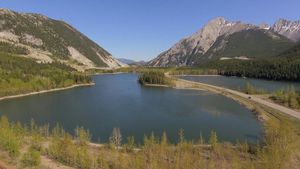Hurricane Helene made landfall last week, wreaking havoc along the southeastern coast and forcing thousands to seek shelter. While many breathed sighs of relief as the storm passed, the long-term consequences are only beginning to emerge.
The National Hurricane Center tracked Helene as it churned through the Atlantic, providing updates and warnings to coastal communities. Despite being downgraded to a tropical storm before making landfall, Helene brought with it significant rain, winds, and flooding. Emergency services mobilized quickly, ensuring evacuation routes were clear and shelters were set up for those who needed refuge.
During the storm, local authorities highlighted the importance of preparedness. Emergency management officials had been monitoring weather patterns for some time and were proactive, ensuring residents were informed about the impending storm. This advance warning helped many evacuate and secure their homes before conditions deteriorated.
“It’s always scary to see these forecasts, but it is heartening to see how our communities have come together during this challenging time,” said local officials. They praised the collective efforts of first responders and volunteers who worked tirelessly to assist those displaced by the storm.
Even as the worst of the storm faded, concerns about the aftermath grew. Many regions experienced significant flooding, rendering roads impassable and damaging infrastructure. State agencies rushed to assess the damages and coordinate relief efforts, recognizing the challenges of storm recovery.
Experts warned of the possible long-term effects, particularly on the environment. With increased flooding, there is heightened concern about water quality and contamination, especially in areas where floodwaters mixed with sewage. “The impact on local ecosystems could be severe if appropriate precautions aren’t taken,” addressed environmental scientists monitoring the situation.
Testing for water quality became a top priority, as authorities advised residents to stay out of flooded areas until assessments were completed. Public health officials issued notices emphasizing the need for residents to monitor their drinking water and reported symptoms of potential contamination.
Another long-term concern rising from Hurricane Helene is economic. Many local businesses experienced damage to property, which could lead to losses and slow recovery processes. Business owners worried about lost revenue and the ability to bounce back after the financial hit. According to local chambers of commerce, some establishments may need grants or loans to recover fully.
“We’re optimistic about rebuilding, but the road will be long,” stated one business owner who runs a boutique shop affected by flooding. “We’ve invested so much here, and the community is going to rally, but we need support.”
Insurance claims started rolling in almost immediately after the storm passed, creating another layer of complexity. Residents faced frustration over potential delays and uncertainty about coverage, which could amplify their challenges. Insurance companies urged clients to document damages and expenses to expedite claims processing.
On the positive side, community resilience stood out as one of the noteworthy highlights of the response effort. Neighborhoods turned out, offering support, food, and shelter to those displaced. Many residents opened their homes to neighbors, showcasing the spirit of togetherness during this challenging time.
“It really shows how strong our community is,” remarked one volunteer who helped run local shelters. “When it’s tough, people step up and lend hands, and it’s beautiful to witness.”
Disaster recovery plans were activated, with local and state officials gathering to strategize rebuilding efforts. Collaborations with federal agencies were discussed to secure necessary resources for afflicted areas. Officials advocated for long-term solutions to bolster preparedness for future storms.
Hurricane Helene also prompted discussions about climate change, as many scientists and advocates stressed the importance of addressing environmental impacts. Experts note the increasing severity and frequency of storms can be tied to changing climate patterns, raising alarms about preparedness strategies moving forward.
With many neighborhoods still assessing damages, residents began considering how to fortify their homes against future storms. From installing storm shutters to elevatory structures, communities began prioritizing resilience. “We need to think about the future and how we can protect ourselves from nature’s fury,” one resident commented.
Helene's long-term impacts were spread beyond just the immediate physical damage; they reached deep within the fabric of local communities. Recovery efforts promised to reshape neighborhoods, bringing expanded infrastructure, improved emergency plans, and renewed discussions about climate adaptation.
Unquestionably, Hurricane Helene left its mark. The memory of its impact will linger, serving as both a reminder and catalyst for future resilience. The community spirit displayed and the lessons learned will hopefully guide the path forward as they navigate recovery.



